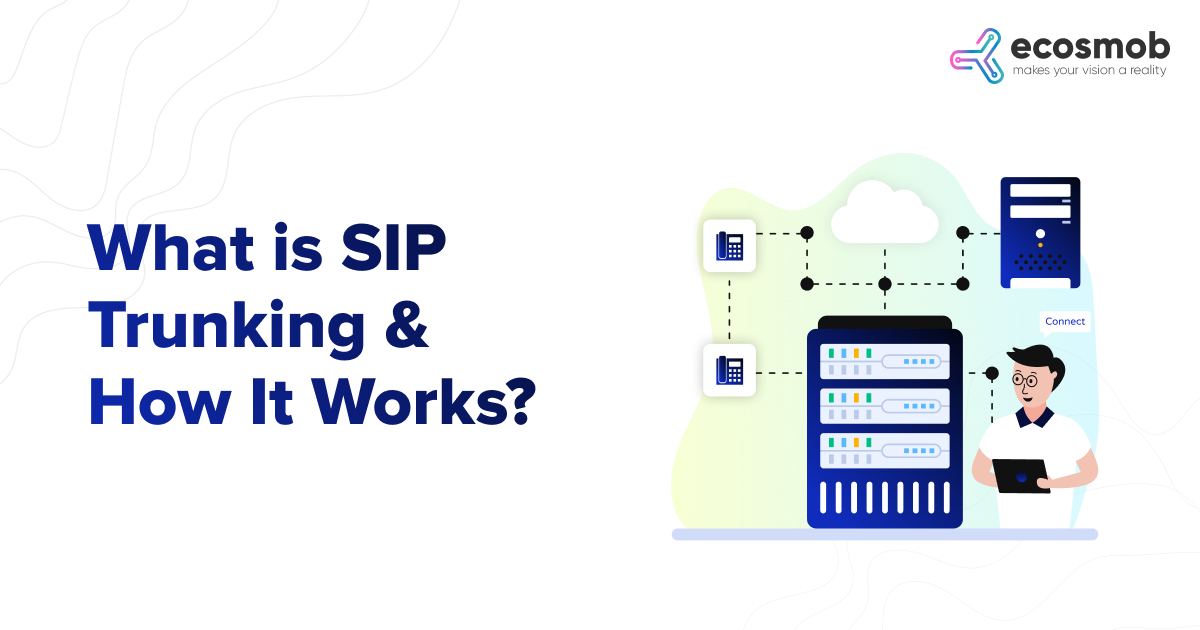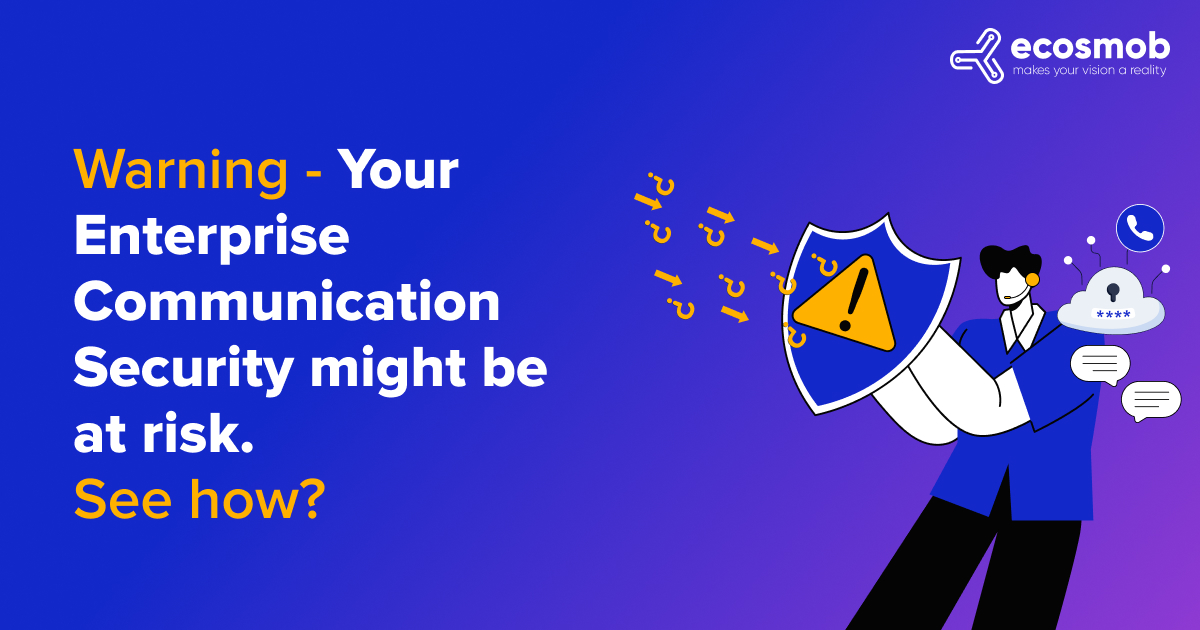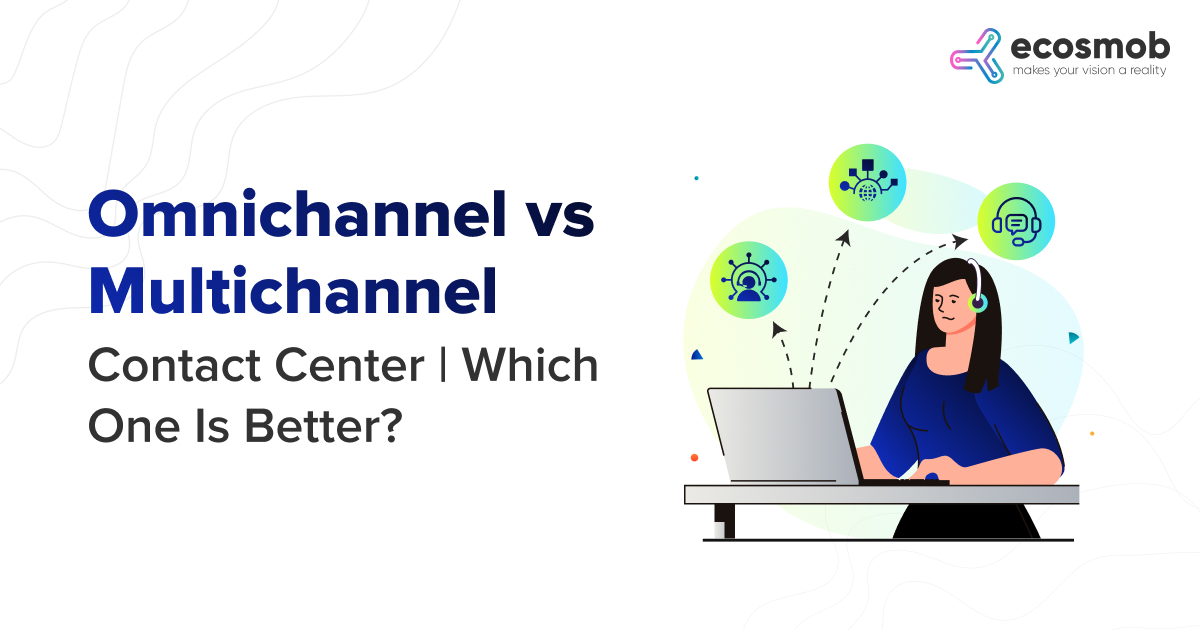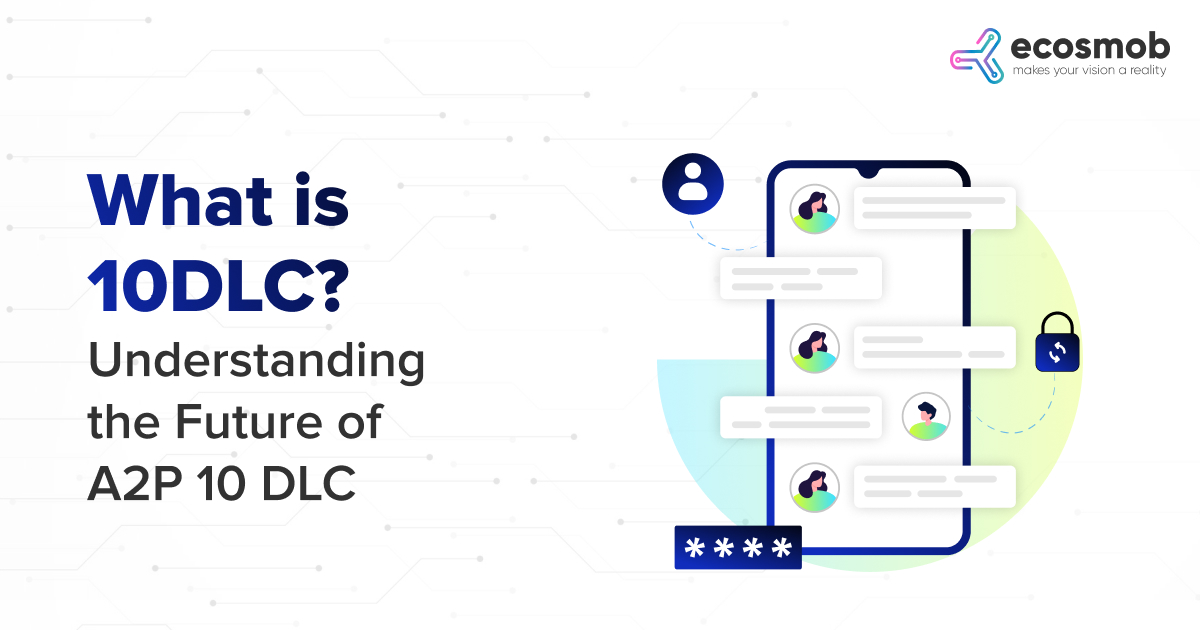Two of the most active and transformational technologies, in the digital world are Unified Communications (UC) and the Internet of Things (IoT). By coming together, they are redefining the laws of enterprise communications—both with one another and with customers. We at Ecosmob will examine the opportunities and challenges this relationship presents as we delve further into the synergistic relationship between Enterprise Unified Communication Solutions and the Internet of Things(IoT).
Ready to Explore how IoT can revolutionize your communication strategies?
Integration of Unified Communications (UC) and Internet of Things (IoT)
Unified communications is a collection of connected internet solutions to improve communication, efficiency, and teamwork. UC combines voice, video, messaging, and conference as just a few of the communication modalities into one interface. On the other hand, an Internet of Things network consists of real-world items (often called “things”) with sensors, IoT software, and other embedded technologies that allow them to exchange data and interact with other devices and communication systems via the Internet.
UC and IoT integration has resulted in substantial technological advancements. Business Communication can access a more complex data stream, enabling more profound insights and better operational control by integrating IoT with UC.
Integration of UC and IoT: Top 5 Opportunities
Here are some of the opportunities provided by the integration of UC and IoT

Integration of UC and IoT: Top 5 Challenges
While you’ll find many advantages to UC and IoT, you must also address the challenges.
- Security Concerns: As the amount of IoT devices rises, so does the surface for potential cyberattacks. The main issue is ensuring UC systems are integrated securely without introducing vulnerabilities.
- Complexity and Interoperability: Even though the Internet is a simple tool for communication, integrating several IoT devices with various protocols and standards might make the UC ecosystem more difficult. Reliable solutions are necessary to supply seamless interoperability.
- Data management: UC platforms could require assistance monitoring the massive amount of data arriving from IoT devices. Companies must create strategies for efficiently handling enormous volumes of data while abiding by data privacy regulations.
- Network Infrastructure: IoT devices broadcast vast amounts of data, which requires a dependable network infrastructure. While handling the increased traffic, maintaining efficiency is essential for network upgrades.
- Scalability Issues: As an organization expands, the number of IoT devices, as well as UC endpoints, also expands. Company Communications faces issues with scalability since they have to ensure that their UC and IoT systems can coexist and develop.
Best Strategy for Implementing UC and IoT
Enterprises must take a strategic approach to reap the benefits of both IoT and UC integration. Here’s how companies can successfully handle the challenges and opportunities:

UC and IoT Future Prospects
Numerous opportunities exist to change business communication and operations when combined with the Internet of Things and Unified Communications. The possibilities this confluence unleashes can lead to improved decision-making, higher operational efficiencies, better customer experiences, and more unified corporate communications.
There are challenges along the way, though. Security, data management, interoperability, network performance, and privacy remain fraught with challenges. The application of best practices and strategic planning are required to address this. Utilizing UC and IoT to the fullest extent can help businesses overcome these challenges and create a more connected, responsive, and efficient workplace.
The evolution of the connection between Unified Communications and the Internet of Things is anticipated to bring new considerations and opportunities as technology advances.
Edge Processing
- Processing Data Locally: Edge computing speeds up data analysis and lowers latency by processing data closer to the source (IoT devices), which is advantageous for real-time communication.
- Decentralized Architecture: By relieving the load on centralized servers, edge computing can make the integration of UC and IoT more scalable and effective.
5G Technology
- Increased Bandwidth: The introduction of 5G technology will allow quicker and more dependable connectivity, overcoming the inadequacies in managing the massive volumes of data produced by Internet of Things devices.
- Improved Mobility: Mobile UC apps and IoT devices will be supported by 5G’s low latency and high-speed capabilities, allowing for more responsive and dynamic communication.
Let’s Join Hands and Get Rid of Obstacles Together
For Business communication prepared to participate in this integration, the UC and IoT provide a variety of alternatives and have the potential to be revolutionary. Increasing client happiness and enhancing operational effectiveness are consistently among the advantages. These possibilities do, however, present specific challenges that should be adequately taken into consideration. Security, interoperability, complexity, and scalability are a few of the business concerns. Future UC-IoT systems with AI and sophisticated analytics should completely rewrite the rules and give businesses more room to innovate. However, it will also increase complexity, particularly in safeguarding and overseeing these ever-more-complex networks. If you require any support with UC or IoT, do get in touch with us. Our team of experts in IoT and unified communication service providers will help you find a speedy solution to the issue.
Ready to enhance your connectivity?
FAQs
What are Unified Communications (UC) and the Internet of Things (IoT)?
Email, video, phone, and other internal communication channels are typically built into one interface via unified communications, or UC. The physical objects that comprise the Internet of Things, or “things,” are embedded with sensors, software, and other technologies. Since they’re internet-connected, these goods can exchange data with other devices and communication systems.
What advantages may businesses anticipate from the mix of IoT and UC?
Combining UC and IoT enables proactive maintenance, enhanced data-driven decision-making, more creative work environments, and higher productivity. If a creation issue is available, an IoT device can alert the UC system to initiate a meeting call to increase the resolution process.
How can Unified Communications be integrated with IoT devices?
Using middleware to translate IoT protocols into UC systems, devices can be coupled with IoT sensors to send warnings or messages straight to communication channels, automate calls, or start video on communication conferences depending on sensor data or events.
What are some instances of how IoT-enabled software affects UC?
A few examples are predictive maintenance warnings that use UC platforms to plan calls or send messages, software that analyzes data from IoT devices to improve communication flows, and customer care bots that use IoT devices to offer individualized support.
How can companies make sure that IoT connections to unified communications are scalable?
Companies should deploy IoT devices and protocols that are standardized and interoperable, implement scalable cloud-based unified communications (UC) solutions, and make sure their network infrastructure can support growing data traffic and the addition of more devices.















